REGELN NACH GUTSHERRENART
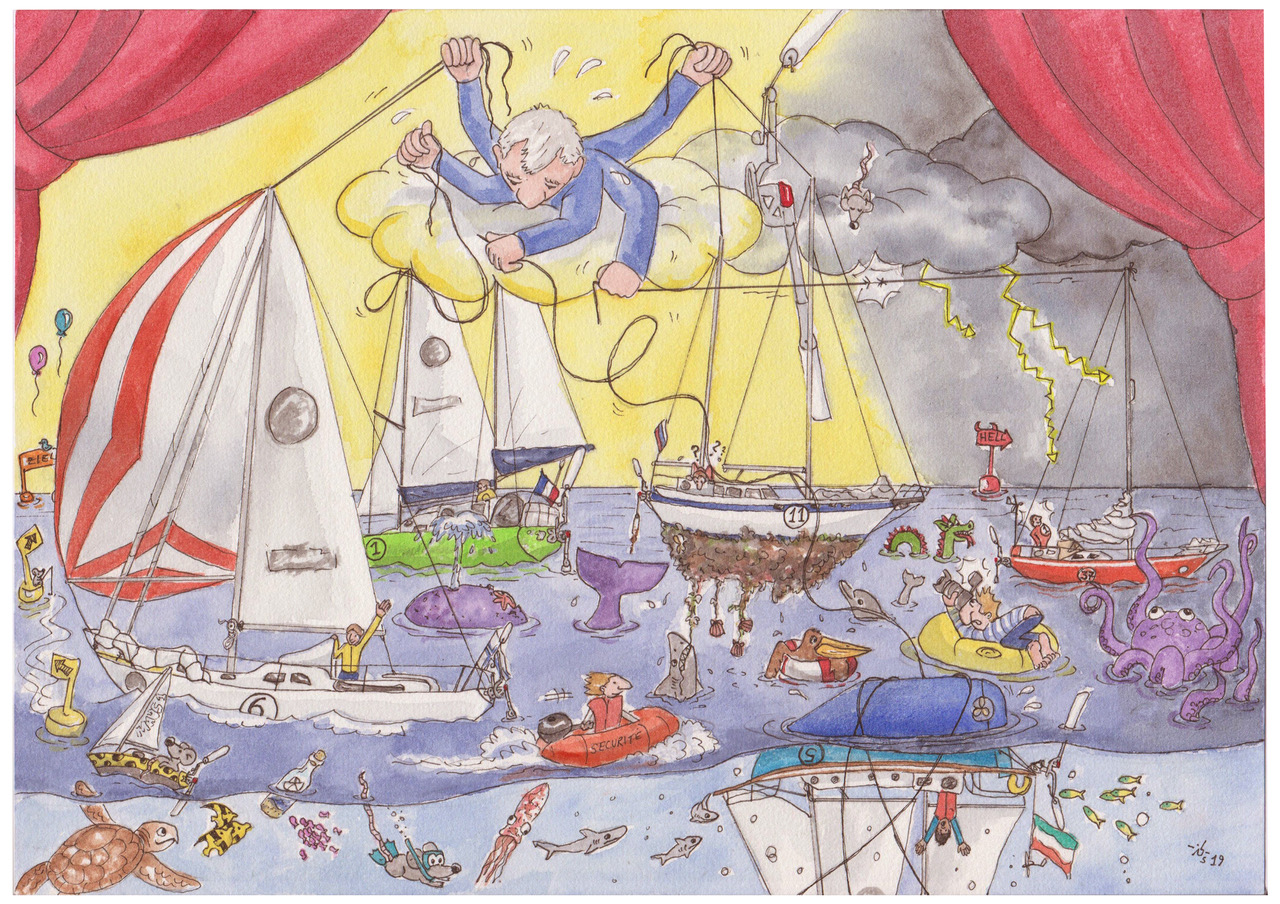
Zwei Monate weiter ist Bewegung in die Spielregeln gekommen. Hat sich etwa der Berg bewegt … oder gar der Veranstalter sich gedreht? Die NOR 2022 jedenfalls lassen erkennen, dass man nachgedacht, ein paar Hausarbeiten gemacht, hier und dort Regeln nachjustiert, wobei ich als Spezialist für Heckverzierungen mich eben nur auf diese kapriziere, weil ich dabei mit den Beinen auf Tatsachen stehe, mich Haifischen somit nicht zum Frasse vorzuwerfen habe, wenn oder weil ich auf zu dünnem Eis gestanden, eingebrochen und den Fischen mit dem breiten Grinsen in die Augen zu schauen hätte. Jedenfalls sind in einem Regelwerk von 63 Seiten nur wenige Zeilen für mich relevant, unscheinbar zunächst, gleichwohl voller Brisanz.
REDUNDANZ DURCH AUTOPILOT
Autopiloten waren und bleiben verboten, dies ist in den NOR unter BANNED EQUIPMENT nachzulesen. Unter SAFETY PLAN allerdings heisst es nach wie vor:
Emergency Cockpit Electric Autopilots may be carried on board an Entrants boat, only if all its components are secured in an approved container and sealed in an approved manner, such that only by Breaking the security seal can the system be installed. An entrant must submit comprehensive details of the chosen container and method of security sealing it for approval to the organisers. If the seal is broken for any reason whatsoever the Entrant will be moved to the Chichester Class. Only the electrical wiring linking the pilot to the boat’s batteries may be installed with one waterproof power plug on deck. No other installation wiring or components are allowed.
Aus zuverlässiger Quelle habe ich kürzlich erfahren, dass drei GGR Teilnehmer von dieser Option Gebrauch gemacht haben, die Namen allerdings wurden nicht genannt.
Offenbar geht der Veranstalter also auch weiterhin davon aus, dass Windsteuersysteme (WSA) die Herausforderungen einer Weltumsegelung in den Hohen Breitengraden ohne Störfälle bestehen können, denn andernfalls hätte er sicherlich eine bessere Vorsorge für seine Segler getroffen, bzw. sie treffen müssen? Die Situation – und die Fakten – wurden im Windvane Report adressiert.
APPROVED WINDVANES
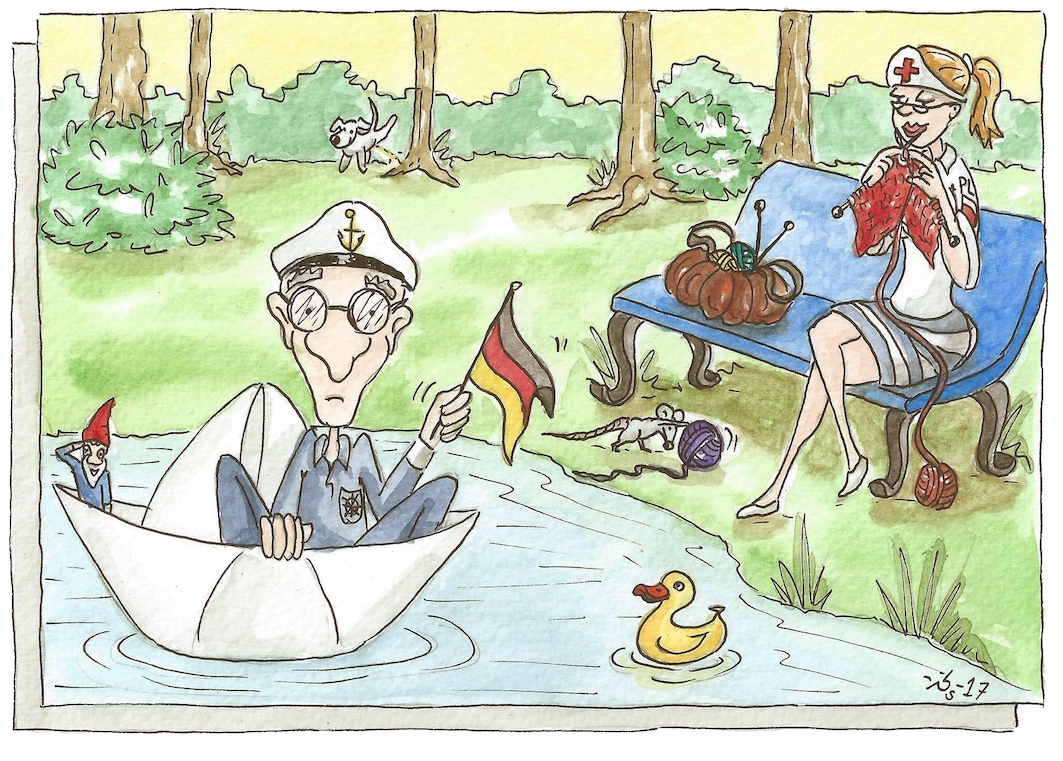
Ein Terminus wie ein Gütesiegel! Im Windvane Report allerdings ist nachzulesen, warum mechanische Steuersklaven für den Einsatz in den Hohen Breitengraden nur bedingt einsatzfähig sind. Umso erstaunlicher für mich, dass der Veranstalter sein „Approval“ weiterhin – oder dennoch? – ohne Einschränkungen erteilt!
Wind-vanes currently “approved” for the GGR include Hydrovane, Aries, Windpilot and Monitor-only with GGR Mods. Entrants wishing to use other brands must supply a brief report on why they believe that unit will provide secure service on GGR style boats during storms in the Southern Ocean
Nicht unerwähnt sollte bleiben, dass ein Meinungs Austausch mit dem Veranstalter einer Einbahnstrasse glich, derweil Gegenverkehr als verbotene Frucht befunden wurde, denn die Funkstille wurde zu meinem Sponsoren Privileg.

Wenn also der Veranstalter heute trotz Kenntnislage von Schwachpunkten ( Shearpins – Overload Protection ) sein „Approval“ erklärt ( provide secure service on GGR style boats ), den Einsatz sicherheitsrelevanter Redundanz zeitgleich unter Strafe stellt (Chichester Class) – sehe ich eine verhängnisvolle Interessenkollision zum Nachteil der Segler, denen die alleinige Verantwortung für die Entscheidungslage zugeschoben wird, deren praktische Folgen in einem Seenotfall enden können, die bereits stattgefunden haben.
Liegt hier der Hase – oder das Geheimnis? – begraben, das dem GGR mediale Aufmerksamkeit – oder Würze? – sicherstellen soll, weil die Segelheroen diesen Kampf einzig mit – oder gegen? – sich selbst zu bestehen haben, derweil der Veranstalter sich hinter einem verqueren Regelwerk vermeintlicher Retro Originalität versteckt? Ein Spiel mit der Sicherheit der Athleten, bei dem der Veranstalter eigene Verantwortung bereits im Vorfeld von sich weist? Für mich ein Schuss in den eigenen Schuh, unverantwortlich zudem, weil die Sicherheitslage der Segler – wider besseren Wissens! – erkennbar unter Vorsatz – verschlechtert wird.
FEIGENBLATT EMERGENCY RUDDER
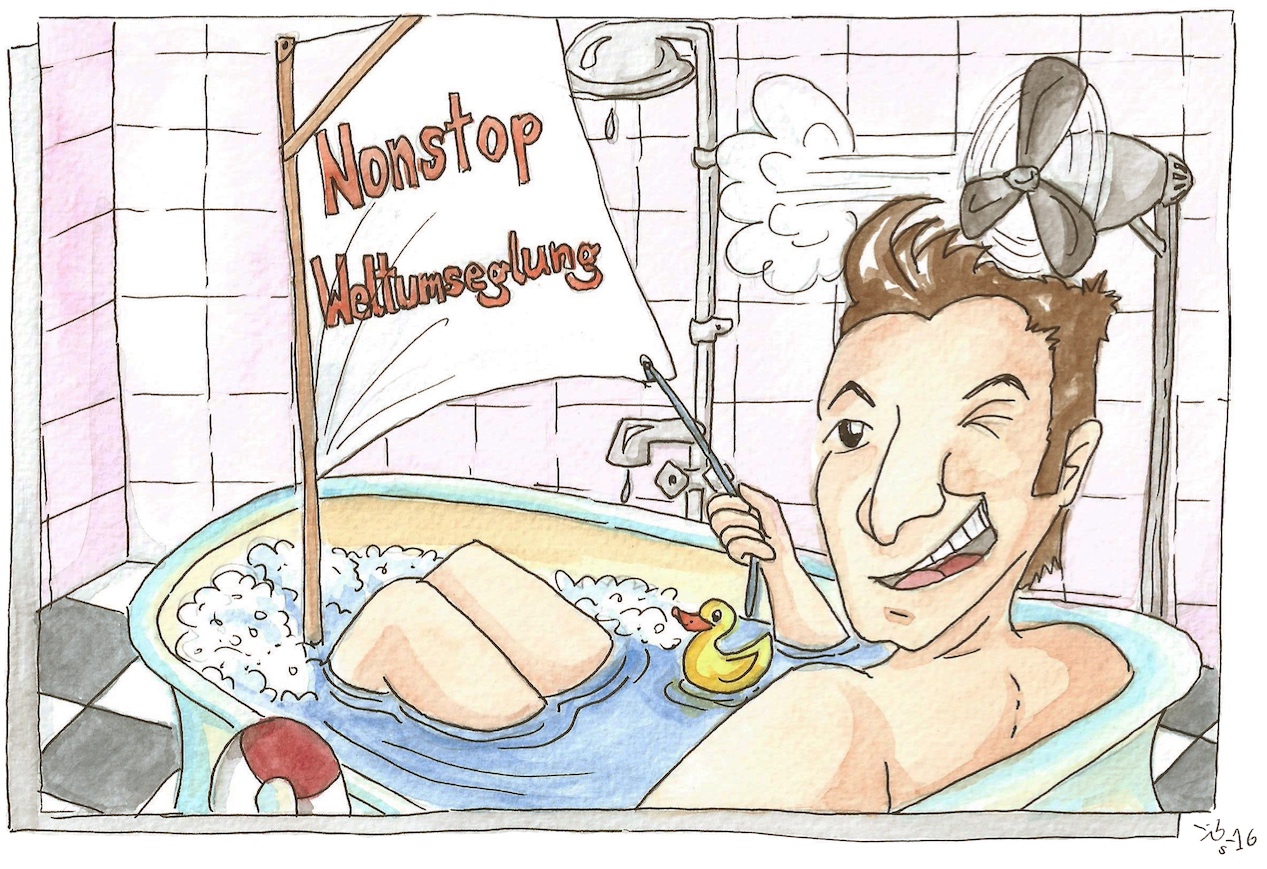
Wenn selbst der letzte Interessierte, sozial Verlinkte oder gemeine Segler nun begriffen hat, welch besondere Präferenzen der Veranstalter in Bezug auf Heckverzierungen hat, weil er vermutlich seinem ganz persönlichen Sponsor sämtliche Heck´s seiner Schützlinge exklusiv zur Ausrüstung zur Verfügung zu stellen hoffte, dann können die NOR Rules ansonsten heute niemanden mehr überraschen, weil die Stringenzen der Gutsherren Präferenzen – unter der Mimikry von Sicherheitsmassnahmen – überall in den Regeln nachzulesen sind. Für den hier begünstigten Sponsoren der Traum schlechthin und eigentlich unbezahlbar, gleichwohl für einen überschaubaren Betrag, Fleisch gewordene Wirklichkeit.
5.1.5 Special equipment regulations
K) If wheel steering is fitted; an effective emergency tiller is required. Supplies and equipment to affect an emergency rudder and steering must be on board. This emergency steering must have been previously installed by one person from the boat and used by the skipper (with the main rudder locked) in the open sea on the entered boat for at least five hours with average wind over 15kts on a triangular course and a full detailed report on its operation and satisfactory performance, with photos, must be submitted with the Race Organiser no later than 30th MAY 2022. A permanent Tiller may replace any standard wheel steering system.
Ob es hilfreich ist, in Bezug auf die Wahl einer WSA ggf abtrünnigen Delinquenten die Bürde eines praktischen Tests der Funktionsfähigkeit eines Notruders aufzulasten, um ihnen den finalen Kaufentscheid zur richtigen WSA zu erleichtern, wage ich zu bezweifeln, weil hier ein Terrain betreten wird, auf dem das Eis immer dünner wird, auch wenn man als Gutsherr glaubt, die Argumente – als Spielregeln getarnt! – diktieren zu können. Dazu ein paar Gedankensplitter:
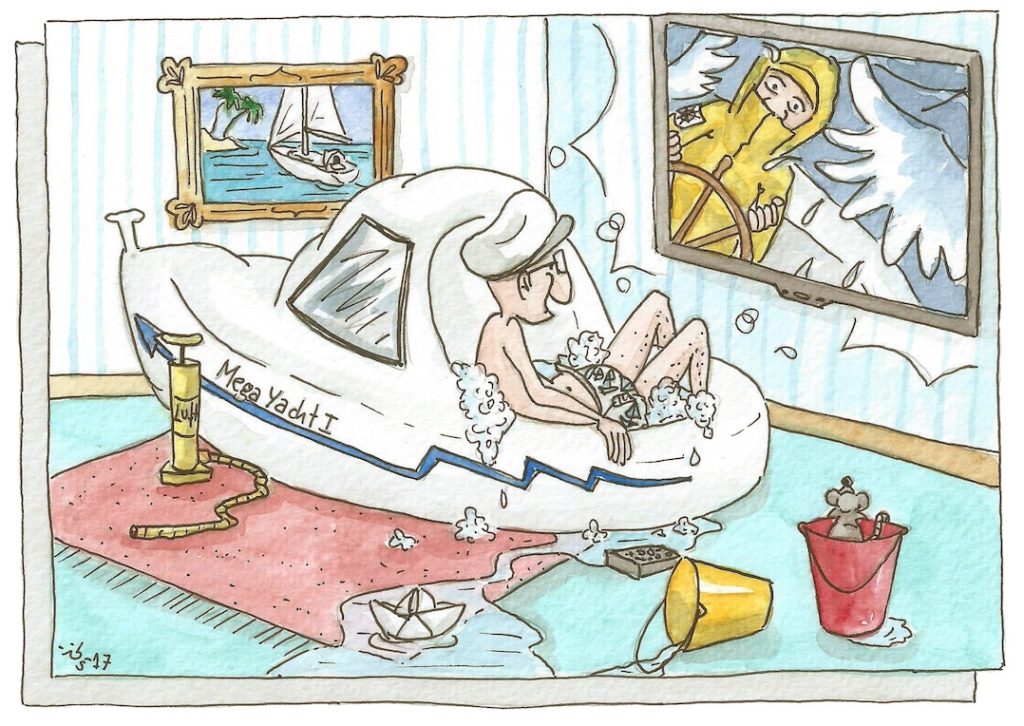
Über die Notwendigkeit eines Notruders an Schiffen mit Langkiel könnte man theoretisieren, wohingegen eine Notpinne für Schiffe mit Radsteuerung Selbstverständlichkeit ist. Die GGR Schiffe erfüllen sämtlich qua Regelwerk beste Voraussetzungen für eine sichere Reise, was durch die Praxis bewiesen, denn Schäden an Ruderanlagen hat es nicht gegeben, wenn man die Situation an Bord der PUFFIN ausnimmt, wo zwei wichtige Voraussetzungen – Planungsfehler! – vernachlässigt worden sind:
– Die Radsteueranlage war für den geplanten Einsatz in doppelter Hinsicht ungeeignet.
– Eine solide Notpinne war nicht vorhanden
Welchen Sinn es allerdings macht, eine praktische Funktionsprüfung mit „festgesetztem Hauptruder „ per Video Beweis vorzulegen, wird vermutlich Geheimnis des Veranstalter´s bleiben, weil im Ernstfall das Hauptruder eigentlich gar nicht mehr vorhanden ist! Praxisnah´ wäre allenfalls der Beweis einer Funktionsprüfung mit „nicht festgesetztem“ Hauptruder gewesen, weil dieses im Notfall als Lateralfläche nicht mehr zur Verfügung steht, eine ungleich härtere Herausforderung für das Bestehen einer Funktionsprüfung, weil die WSA Ruderfläche nur im Bereich von ca 30% der wirksamen Hauptruderfläche beträgt. Im Kontext einer vom Veranstalter als vorteilhaft gepriesenen Ausrüstung mit einer WSA mit Hilfsruder werden zudem Argumente vernachlässigt, die bei der Wahl ansonsten Wichtigkeit besitzen:
– Die ungeschützte Lage eines Spatenruders am Heck ( Treibgut )
– Unerreichbarkeit von Sollbruchstellen ( shearpins )
Es ist natürlich nachvollziehbar, dass der Fokus eines Veranstalters mit besonderen Präferenzen, hier Blüten – oder Purzelbäume? – schlägt!
Es sei erlaubt, an dieser Stelle darauf hinzuweisen, dass ich Igor, Antoine und Tapio explizit vom Einsatz meiner Pacific Plus Doppelruderanlage abgeraten hatte, weil ein Hilfsruder durchaus zur Achilles Ferse werden kann, weil der Segler sein Ruder tief unten am Heck nicht erreichen, somit Sollbruchstellen nicht kontrollieren oder tauschen kann, der Grund, warum Istvan sich ohne fremdes Zutun gegen eine Hydrovane entschieden hatte.
Jean Luc Van Den Heede hat den Veranstalter vorausschauend rechts überholt, indem er eigenständig seine WSA optimierte ( Shearpin verstärkt, Ruderblatt verkürzt ) und ein Schlauchboot an Bord führte, um den Ernstfall zu entschärfen. Vielleicht sollte man dem Veranstalter empfehlen, Hydrovane Segler zukünftig zum Mitführen eines Dinghies zu verpflichten? Immerhin ist auf der MATMUT selbst der verstärkte Shearpin gebrochen, trotz verkürztem Hilfsruder.
Eine unnütze Diskussion, weil sie endlose Weiterungen erlaubt, gleichwohl verdeutlicht, dass das offenbar uneingeschränkte Vertrauen des Veranstalters in die zur GGR 2022 von ihm zugelassenen vier WSA die Erfahrungen der vergangenen GGR keinesfalls widerspiegelt. Vollends irrwitzig würde der naheliegende Gedanke, dass ein Notruder namens Hydrovane nach Verlust des Haupruders einen Bruch des Shearpin´s erleiden könnte. Es bedarf nur geringer Phantasie, die Tragik einer derartigen Situation zu erkennen. Zu weit hergeholt? Ich halte eine Sollbruchstelle für ein vollwertiges Notruder als fehl am Platze! Ein Blick auf die Notruder von Abhilash und Mark Sinclair mag dies verdeutlichen. Die vom Veranstalter hier bemühten Argumente und Regeln halten einer praktischen Betrachtung kaum stand. Man möge mir meinen Sarkasmus verzeihen, aber ich halte die hier strapazierte Notwendigkeit für das Feigenblatt einer Marketing Massnahme.
GGR IN DEN MEDIEN
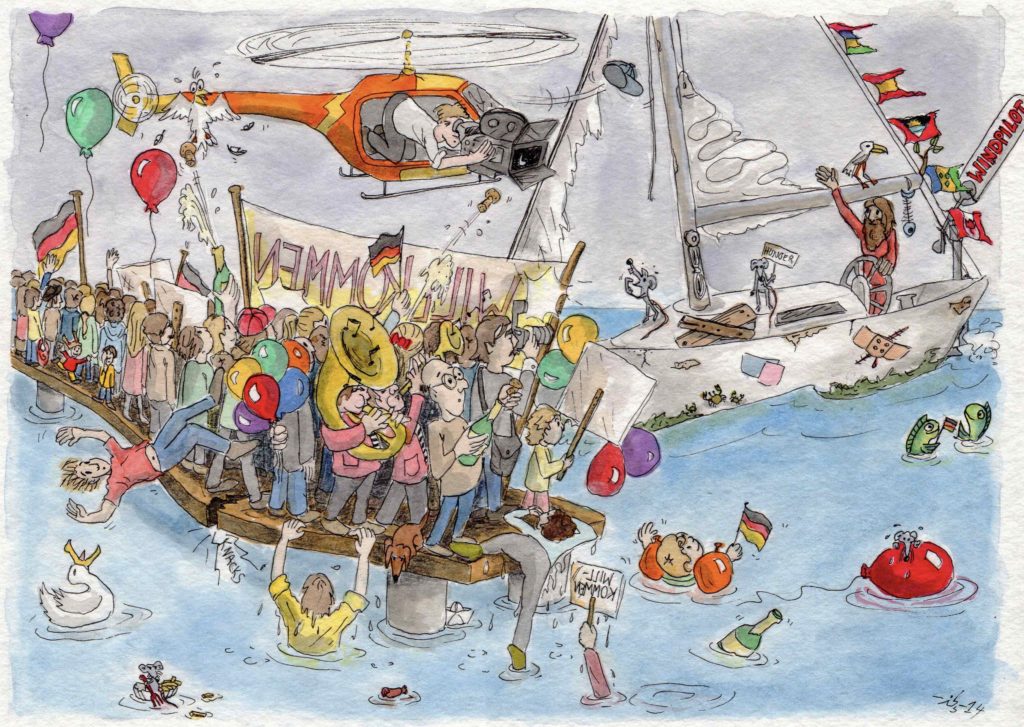
Die mediale Verbreitung des GGR erfolgte durch Barry Pickthall, einen Profi seiner Zunft, der die Berichte des Veranstalters an weltweite Redaktionen aufgearbeitet und weiter geleitet hat. Für Redaktionen in der Kostenklemme ein verlockendes or d´Oeuvre mit da capo Effekt, zudem hoffnungsvollem Potential für Yellow oder gar Red Code Sensationen, die es dann in die Headlines schaffen, bei Abhilash und Susie hat´s geklappt. Verführerisch und voller Pin-Up Fotos in high resolution aufgerüscht, um mit Copy und Paste eigene Inhalte mit wenigen Klicks zu generieren, Alltag heutiger Journalisten, der in allen Marktbereichen funktioniert. Eine Vorgehensweise allerdings, die ein grelles Licht auf journalistische Arbeitsweisen wirft, die dabei allzu leicht überflüssig wird, weil eine glaubwürdige Recherche als unnötig befunden wird.
So konnte es geschehen, dass bei der Berichterstattung die Sichtweisen des GGR Veranstalters – inklusive seiner durch einen Sponsor verursachten Verdauungsbeschwerden – von weltweiten Redaktionen gepasted wurden, mit unschönen Auswirkungen auf die Veranstaltung und auf meine eigene Marke.
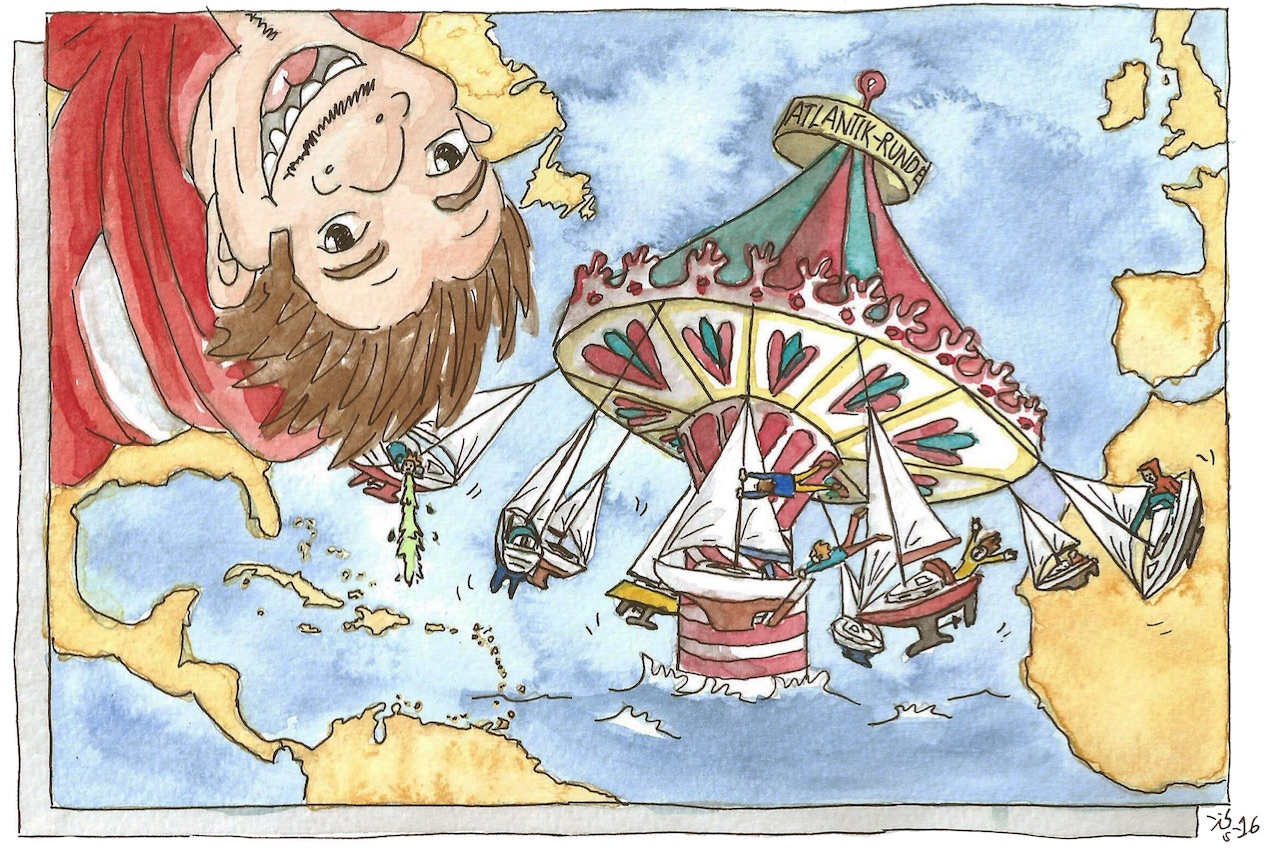
Diese Abläufe wurden zum Startschuss, meine Sicht der Dinge zu publizieren und am Ende sogar Podcasts auf detaillierte Aussagen zu untersuchen. Eine paradoxe Situation, die vermutlich einmalig in der Segelszene ist, insbesondere verquer, weil hier ein ausgewiesener Unterstützer und Sponsor von fünf GGR Seglern, durch einen Veranstalter, bei seiner Arbeit behindert, bekämpft und zu Gegendarstellungen veranlasst, besser: gezwungen worden ist! Schlimmer als im Kindergarten! Ein Makel, der eine eigentlich wundervolle Veranstaltung vom Anfang bis zum Ende überschattet hat.
Der Rote Faden mangelnder Neutralität gleicht einer Blutspur, die ich hinlänglich ausgeleuchtet habe. Ich beschränke mich heute auf den Hinweis, dass ein Schlagabtausch auf offener Bühne unklug, zudem negative Strahlkraft für potentielle Unterstützer besitzt, zumal der Wettlauf um mediale Reichweiten nicht durch Anzahl von Hits, hingegen durch Inhalte und Fakten entschieden wird, beurteilt von einem Publikum, dass sich – wie von Geisterhand – in Spreu und Weizen teilt.
Meine Kontaktaufnahme zu Barry wurde zum logischen Schritt. Es gehört zu meinen ungewöhnlichen Lebenserfahrungen, dass mir Unterstützung bei der Suche nach einem kompetenten Journalisten / Autor zum Thema Windvane Report zugesichert – dies am Ende jedoch nicht zum Erfolg führen konnte, wofür Gründe benannt wurden.
GLAUBWÜRDIGKEIT

Der erste Grund war mir wohlbekannt, es war zufällig der gleiche, weshalb ich im Jahre 1998 eine Klage am HIGH COURT IN LONDON zu bestehen hatte: Glaubwürdigkeit! Kann oder darf ein Hersteller zu seinem Fachbereich Berichte oder Bücher verfassen? Am High Court hatte ich dafür die Bestätigung erhalten. Nach 45 Jahren der Tätigkeit in Sachen Steuersklaven habe ich diese telefonische Frage von Barry, mit einem Lächeln quittiert.
Die Suche nach einem geeigneten Autor erwies sich als schwierig, wobei Barry die Namen von Dick Koopmans und Gerard Dijkstra nannte, beide weltbekannte Naval Architekten, Dick war als Team Manager für Mark Slats im vergangenen GGR aktiv während zudem Gerard der Autor des vielgelesenen Buches Self steering for Sailboats in den späten 70 ger Jahren gewesen ist, beide Windpilot Segler seit vielen Jahren. Verhandlungen mit Magazinen – Print sowie Online – oder Freelancern erwiesen sich als kompliziert, weil entweder Anzeigenaufträge oder Honorarverträge eingefordert, mangelnde Kompetenz erkennbar, oder die Bereitschaft fehlte, einem für Seesegler so elementar wichtigem Thema, ausreichend redaktionellen Platz zur Verfügung zu stellen. Insgesamt ein deja vu, ein mir bestens bekannter Hürdenlauf um journalistische Aufmerksamkeiten, bei dem wichtige Details allzu schnell untergehen, übrigens Grundstein für meinen Entschluss vor 20 Jahren, lieber auf weltweites Direktmarketing sowie Word of Mouth zu vertrauen, ganz ohne Anzeigenwerbung oder Messegefängnis Aufenthalte. So wurde, keineswegs zur Überraschung für mich selbst, erkennbar, dass ich den Windvane Report selbst zu verfassen hatte.
Ironie der Geschichte, interessant zudem, dass mir ausgerechnet vom Verteiler aller GGR Media News „fehlende Glaubwürdigkeit“ als hinderlich für meinen Windvane Report entgegen gehalten wurde! Ich habe meine Doktorarbeit mit Sorgfalt dennoch niedergeschrieben, meinem wichtigsten Blog, weil er 45 Jahre Lebenserfahrung in Bezug auf Heckverzierungen komprimiert und zum bislang mit Abstand meist gelesenen Blog im Verlauf von 9 Jahren avanciert ist.
Bleibt nur noch festzustellen, was ich in Korrespondenzen mit verschiedenen GGR 2022 Seglern bereits mitgeteilt habe: Ich werde mich an dieser Veranstaltung zukünftig nicht mehr beteiligen. Gewohnt, mit Seglern in gegenseitigem Respekt umzugehen, bin ich im GGR auf Menschen getroffen, denen andere Werte wichtiger sind.
Garnicht meine Welt!
Hamburg den 7.9.2019
Peter Foerthmann






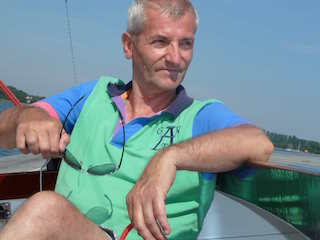

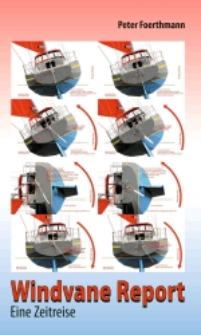


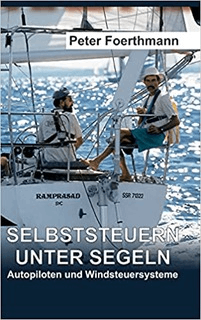
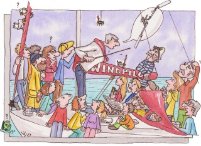
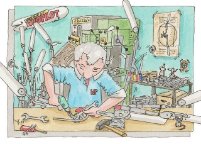
















Hi Peter
Your GGR article was an eye opener for me.
As a SAR helicopter pilot for much of my career. Involving many operations driven by extreme weather events, I have had a birds eye view of survival conditions that made me re-consider my own cruising plans more than once. And it outlines how little many cruising sailors (such as myself) have to learn, even after decades of cruising. (1.5 RTW & 3 Atlantics since 1973)
As my boat sizes grew with relative prosperity, my WSS grew with it, running through Navik, Aries, Fleming, Monitor.
Then as my boat sizes decreased again (age), I ran back down the available range until the latest Pacific light 3-4 years ago.
I bought all my previous WSS gear second hand. In fact the unit I bought from you was actually the first brand new WSS I ever owned and I’ve loved it from day one. It’s lack of seasickness, uncomplaining ability to just keep going when times got tough.
Just it’s simple reliability. I have watched it for hours on end waiting for something to fail…
I’m still waiting!
Against all common sense in today’s world of overpriced marinas and my own advancing years.
I’m upsizing again and will need a larger Windpilot ….the choice is clear!
Paul Johnson.
En-route Dakar to France
Air France 719
Going to windward at mach 0.85 😉
Hi Peter,
sorry to hear about that I do believe the wind pilot is one of the best out there but I understand your decision, I will still be using my wind pilot for a few yrs still before I change it when I do the full refit
All the best for the future.
John Clark, SY Skyblue
entrant GGR 2022
That’s an interesting read Peter, now tell us who the artist is that illustrated the article?
Thanks
Hi Drew,
SV Olgalou is owned by Inga and Vassil, German – Bulgarian liveaboard couple, their Nicholson 31 currently in Papeete ( for sale) whilst after 10 years of travelling the owners returned back to Europe … both longtherm Windpilot sailors … after getting some very nice cartoons at X-Mas I have discovered some years ago to suggest kind of joint cooperation as Inga is a professional cartoonist. This blog is crowded with her beautiful artwork since and all the three of us enjoy the benefit out of it as Vassil published some short stories about liveaboards experiences during years. The story is linked here, some language training for an Australian skipper living far away from Germany … but Google translate might help.
https://windpilot.com/blog/morphy-blitz/vassilingalou/
Dear Peter,
Thx to your unpleasant experiences with the GGR everyone is able to get intense information about what is what. Stripped down to the bare metal. I salut and thank you for that.
I cannot imagine the next GGR without Windpilot. Time will tell who will be bold enough to go without a windpilot anyway.
Sure as hell I would.
Cheers.
Eli van den Broek
Peter,
To carry a spare rudder should be normal practice for GGR. I guess that most of round-the-world races require spare rudders to be carried and which are quick to install. But I would keep this separate from windvane steering equipment.
If you steer by a windvane/small rudder system, there still should be, in addition, a spare rudder which is easy and quick to install. Just as you say.
not to forget to mention: I carry a spare rudder onboard Bestevaer2, it is small, but will bring the boat home
Cheers,
Gerard
Hello Peter!
I just finished reading your blog. I think your Windpilots speak for themselves. I am a huge fan and there is no doubt about it.
I had a message from Gaurav that you would not supply one to him. I was taken a bit aback. I hope you did not mean that you won’t sell him one. Or was it that you won’t sponsor him one.
Anyway. If I were to return to the race I am going to take a windpilot with me.
No doubt.
My crew agrees.
Warm regards from Ved, Abhraneil, Urmi and I to Marzena and to you.
Abhilash
Hi Peter,
having been involved in some of your windvane report, nothing is really news to me in this posting. But of course it elicited some new thoughts.
One, I think the first interested to guarantee a perfectly functioning self steering system on an event of this magnitude is the sailor himself. This kind of paternalistic rule should have no place in such an event, like dictating which windvane models are approved. First, approved by whom, based on which data. The spare rudder or emergency rudder rule is understandable, but I agree with Gerard Dijkstra when he says it should have nothing to do with the self steering. Of course if you can make both work together, better, but spare should mean, put aside, not under risk from the every day grind of the voyage itself. If your main rudder „has left the building“ as you say, you want a fresh out of the locker device to take its place.
Hence your SOS rudder or similar designs have their place, and the way we integrated both the spare rudder and a Pacific for self steering this spare rudder, seems the logical way to go to me. I admit partiality on this point.
Two, in my 23 year cruising life, I have never thought that I could do it all with just an windane unit. Any realistic sailor knows that there will be moments when a reliable autopilot can make the difference between successfully managing a situation, or ensuring some rest, or being prone to mistakes or accidents due to overriding situations or fatigue. Of course, if you don´t have it you don´t have it, but if you can, why not. So I always used a reliable wind vane self steering system, but whenever I had the means, I also had an inboard hydraulic autopilot to do the back up and for motoring situations.
I once heard an interesting phrase: Captain Cook took all the best technology that was available to him at the time, and so did all other great explorers and navigators, even the Polynesians. So taking the best you can have does not make you a failure.
And as you commented, the human and psychological challenge in this race is already a big enough summit to climb, and having a GPS or a radio modem for grib files does not really make it all that much easier. Anyway, unless the competitors were using specially made or arranged satellite phones and AIS transponders ( I am not saying they were not, I have no information about this to affirm anything ), most of these units have a GPS position on them, which mostly can be accessed by the user.
Lastly, I must say I agree with Abilash, you may not sponsor, but surely you are going to sell units for competitors who want them, aren´t you? I would say this is in their interest. I for myself would not go anywhere near a long passage under sail without my Pacific. No pacific, no race for me, sure.
Congrats on all your excellent work!
best from Lisboa
Luis Manuel Pinho
SY Teresa
TOTAL WITHDRAWAL FROM GGR PARTICIPATION
I should comment the suggestion of Abhilash, Eli and Luis.
The thought of selling my systems for the next GGR is an attractive one of course but I still remember too well my unspeakable experience in the last race: seeing the organiser damage my brand in LSO even before the race had started, seeing him gladly offer assistance to sailors and their shore team during the race when it seemed likely they might switch to a different windvane system and seeing him refuse to engage with my advice or pass it on to sailors who needed it.
I think the organiser lost his credibility when he demonstrated his willingness to give up any semblance of impartiality in order to promote his sponsor ??? and credibility is everything in this situation. Don said, „let’s all have fun in the GGR“ but the reality for me was anything but fun and I really don’t need to go through it again.
Peter
Lieber Peter,
als „Normalweltumsegler“ sind wir in den 12 Jahren (1999-2011) mit Deiner PACIFIC und einem Notruder zur See gefahren. Vielleicht erinnerst Du Dich noch an die ARC 1999 in Las Palmas? Ich zitiere aus unserem Buch: „Peter Förthmann von Windpilot schlägt sein Hauptquartier auf SUBEKI auf. Er gibt gute Tips und Zubehörteile für unser Notruder, das am Windpilot Befestigungsanlagen Flansch befestigt werden soll.“ Nochmals Danke Peter!
Vielleicht war dieser Lösungsansatz zu einfach für ein CGR Regelwerk?
Herzliche Grüße
Sybille +Christian Uehr
SV SUBEKI
Moin Ihr Zwei,
selbstverständlich erinnere ich mich an alle unsere Treffen! Das besondere an Las Palmas, es war unser zweites Treffen nach der Montage in Schleswig, war die Athmosphäre dort unten, leicht, beschwingt und immer positiv, keinesfalls schicksalsschwer, weil der „grausame Atlantik“ vor Euch gelegen hat.
Was dabei herausgekommen ist, habe ich in 2018 aufgeschrieben: es ist die Geschichte einer Geburt von Marine Equipment, die unter einem schönen Stern stattgefunden hat, das SOS Ruder, das bei Euch seine DNA Verwandschaft zum Opti Ruder noch zur Schau gestellt. Hier die Geschichte:
https://windpilot.com/blog/press-tv/sos-rudder/
Beste Grüsse
Peter
As Abhilash has mentioned I reached out to Peter for a quote for a Windpilot system for my Baba 35. I DID NOT ask Peter to supply one as sponsorship, my entry is going to be a Corinthian entry. Peter humbly refused and pointed me towards his blogs which I had already read. I agree with his reasons, but disagree with his decision.
My decision with Windpilot was based solely on the experience of Abhilash and also because I was planning to change my Baba to a tiller steering system due to the reliability of the windvane interface.
Though I am disappointed in Peter’s refusal to get involved with any GGR sailor, I understand his reasons and that decision is solely his.
There are risks in every event and every afternoon sail, as a matter of fact there is also a risk to life as you sleep in your cozy bed. Some of us competitors in the 2022 race have taken the decision to participate because we find benefit in this event that we feel outweighs the risks that it poses. Our decision to participate is solely ours and that of our families. Honestly, no one would give a rats ass if one of us circumnavigated alone- this event, positive or negative- gives us an opportunity to put ourselves out there in this world of commercial interests that might benefit us in the future. We all have to care about our interests, however romanticized our comments on this race in the media are. GGR is as much about fame and publicity as it is about fulfilling our dreams. Anyone denying that is lying, otherwise we would be out at sea right now and not waiting for 4 September 2022. Vendee Globe had its problems, they got fixed, I am sure GGR will fix them too, in numbers they are already ahead of the first GGR.
That said, I am disappointed by Peter’s decision as it denies some of us the opportunity to sail with equipment that has proven its worth. As Abhilash said, his WSS survived the dismasting and 40% of the finishers of the 2018 race used Windpilot. I urge Peter to revisit his decision. Perhaps put in a plan or agreement with competitors to make sure proper installation and usage of the system. If the sailor does not comply, he could very well take back his wind-vane and walkaway from the sailor itself. His blog does outline that the biggest problem for him was that he never got sailing time with Istvan and Antoine and could not rectify their installation issues.
Peter, the decision to supply your windpilot system is yours and I respect it. If you do change your mind, we have three years before the start and get a winning team together.
Gaurav
GGR 2022 entrant
Thank you for yet another interesting blog.
You have got me thinking, and researching in particular high latitude use of wind vanes vs electronic pilots. It seems Vito Dumas did okay without either wind vane or electronic pilot.
Mike Smith, SV Pingo
GGR 2022 entrant
Dear GGR 2022 entrants,
I am convinced that you should not place your message to Peter, but to the organizer and especially to Don!
That Peter doesn’t want to expose himself to another theatre like 2018/19 is really comprehensible.
And if a fair competition for the „best solution“ does not contribute to the safety of sailors, then it is a lousy position. The organiser of the GGR is responsible for this.
Hallo Peter,
Wir waren sicherlich nicht das einzige Boot welches mit einer Pacific Plus Kap Hoorn umsegelt hat. Nach einer 5jährigen Weltumseglung und weiteren 4 Jahren habe ich in diesem Sommer bei Dir das erste Ersatzteil geordert und sofort erhalten.
Nochmals vielen Dank und alles Gute
Hans
SY RESOLUTE
Peter, your decision not to sell Windpilot units to participants in GGR 2022 is understandable and one must respect it. However, I wonder if your decision will protect your company from adverse publicity. People may not read this blog, and then they will just see that there are no Windpilots in GGR 2022, and it seems to me likely that they will draw the conclusion that competitors chose not to install them, that they have come to the conclusion that your equipment is not good enough. And that is far from the truth, as testimonials from Tapio and Abhilash, and the race results, prove. I think that if the public sees that competitors choose Windpilot again for this race, knowing the results of GGR 2018, then that is a powerful endorsement that is independent of bias.
Hi Graham,
life still is a compromise. From now 44 years of living in a market niche of transom ornamentation I am rather trusting on Word Of Mouth of the cruising community, the more as I am convinced that any sailor interested about a silent steering slave will find the way towards information. The wind vane report raises facts which are self explanatory.
best Peter
I enjoyed your analysis of windvane fundamentals and summary of how they performed in the GGR. During the race I was astonished at how most of the sailors pressed on in heavy weather. In the 1968 race, Moitessier certainly pressed on harder than Knox-Johnston, but even he reefed early and hand steered at times. Joshua was bulletproof, which helped, and his trim-tab self steering gear, similar to the unit I sailed with for 20 years, was indestructible. But even if the sailors were not allowing competitiveness to compromise seamanship, which I felt most of the GGR 2018 fleet were, one has to consider the design of contemporary windvane units. I have made passages with an older Aries and an earlier model Flemming Minor. The Aries was just used for tradewind sailing but I still worried about the inaccessible pendulum and the way it slammed at times in a cross sea. I must admit I was younger then, less experienced and too gung-ho. These day I work harder to keep the boat balanced and even occasionally (shudder) resort to hand steering. Another time, lying ahull in the Tasman Sea in a gale with the Flemming, we bent one of the pushrods between the vane and the pendulum. Talking about it years later with Kevin Flemming, he said I should have contacted him and he would have sent a replacement, since they had discovered the original rod was too weak. Fair enough, but when I came to build my dream boat, I fitted a robust trim tab on the external rudder and lived happily ever after. I never took it into the Southern Ocean though. Having sailed there once, from the South Island of New Zealand to Tahiti, I prefer not to. Until now, I have been unwilling to use a servo pendulum model again, but your explanation of how Windpilot has met the challenge of the pendulum slamming against its stops (by not having any), and the subsequent ease of swinging the blade up out of the water while standing (or kneeling) on the deck, has led me to decide I will fit a Windpilot to my current boat, which has an inboard rudder. Servo pendulum gears are undoubtedly more powerful than trim tab units, and now we have a unit that overcomes their inherent design weaknesses. I was considering an auxiliary rudder, but my transom is not strong enough and the risk of damage to the unit too high as well. Thank you for this illuminating report.
Dear Peter
Windpilot Pacific, in my opinion, is the best Windvane equipment on this earth. Quite simply because it has been significantly evolved since the 1980s. The others have not. Weaknesses have been addressed, performance has been improved, longevity has been increased. All done by perhaps the most highly skilled expert in the subject alive today. And all without a significant increase in price!
It can be fun to romantically reminisce about old things, like this 1970s Robin Reliant:
https://classicsworld.co.uk/wp-content/uploads/2018/03/RELIANT-ROBIN-MKI-820×547.jpg
But it comes to something which we use every day, which must be reliable for our safety and sanity, i prefer a VW Golf.
For the GGR organiser to wed himself to the clearly dated and surpassed solution from his financial sponsor, showing clear bias and putting further strain on his entrants, is hard to comprehend.
Your decision to not supply Windpilot equipment under these circumstances is only logical and the correct conclusion. Sailors world wide, who care about self steering, know that Windpilot is the best. It only takes 1hr on the net to work that out.
Much continued success to you!
Kind Regards
Oliver Schörnock